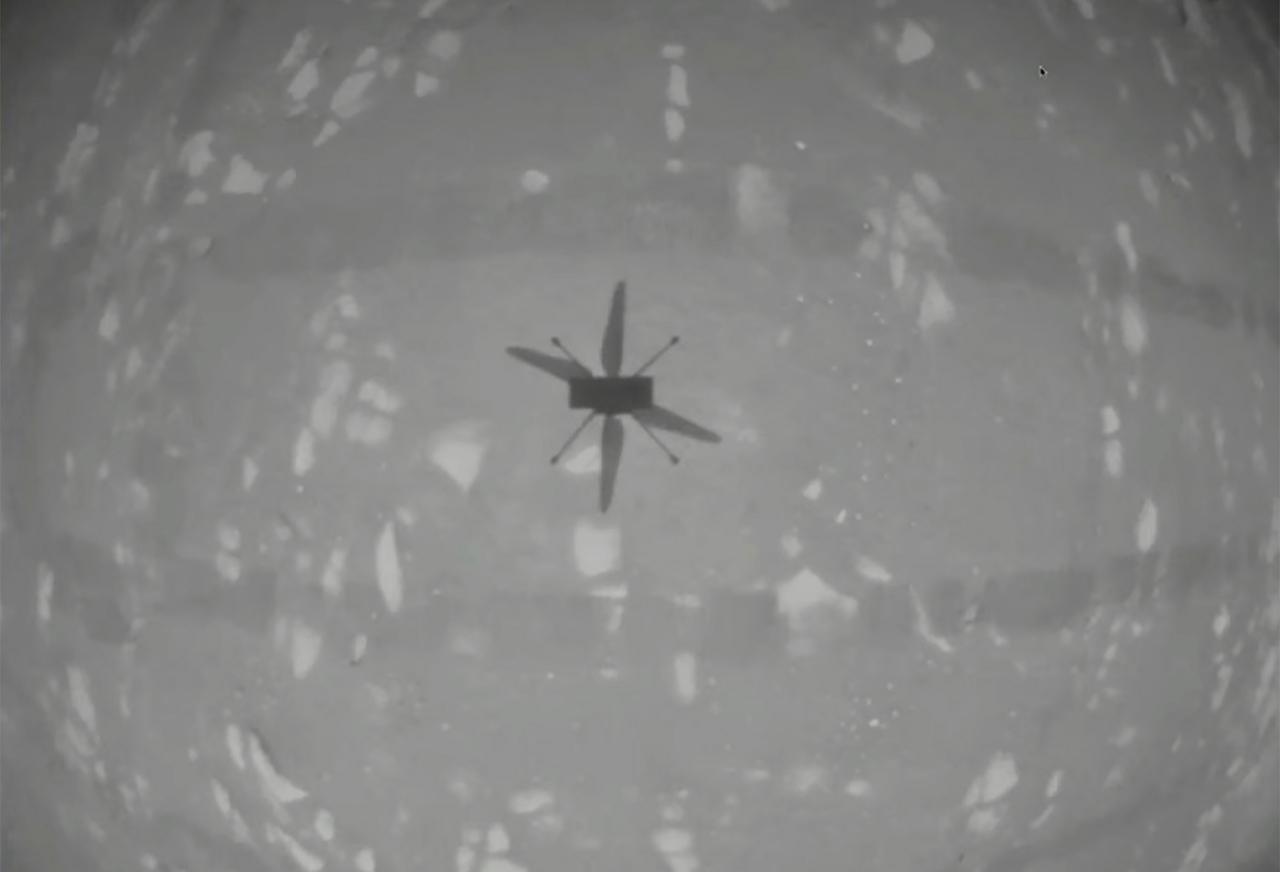Nasa’s Mars helicopter flies
The brief lift-off was the first powered, controlled flight ever conducted on another planet.
Just In
Nasa’s Mars helicopter has flown for the first time, in a momentous feat for human ingenuity, which is exactly what the craft is named.
Earth’s Ingenuity space helicopter lifted off from the Martian surface, flew and landed safely, pioneering a technology that will change the way we think of exploring other planets.
The 4-pound drone began to spin its four carbon-fibre blades in opposite directions at 2,500 rpm, about five times the speed of a helicopter on Earth, and the blades gained enough traction in the thin Martian atmosphere to lift Ingenuity into the air.
The drone climbed about 10 feet above the red-dust ground and hovered there for about 30 seconds. This was the equivalent of flying three times higher than the peak of Mount Everest, since Mars’ atmosphere has 1% the density of Earth’s.
It was the first powered, controlled flight ever conducted on another planet.
Ingenuity’s purpose on Mars was simply to show that rotorcraft technology can work in that kind of harsh environment. Its mission is now a success.
Two cameras on the bottom of Ingenuity should have recorded footage throughout the flight. The Perseverance rover – which carried Ingenuity to Mars – watched the lift-off from a nearby overlook, filming as well.
The video footage from both robots should be available over the next few days, according to Nasa.
Ingenuity had to fly autonomously, since it takes eight minutes for signals to travel between Earth and Mars but Nasa engineers didn’t actually hear from the helicopter until about three nail-biting hours after it flew.
Space helicopters similar to Ingenuity could someday explore canyons and mountains, and study large regions faster than a rover can, or even do reconnaissance for future astronauts.
Nasa already has a more ambitious helicopter mission in development. A rotorcraft called Dragonfly is set to launch toward Saturn’s moon Titan in 2027. It aims to investigate whether that methane-rich world could host alien life.
Subscribe to our newsletter
To be updated with all the latest news and analyses daily.
